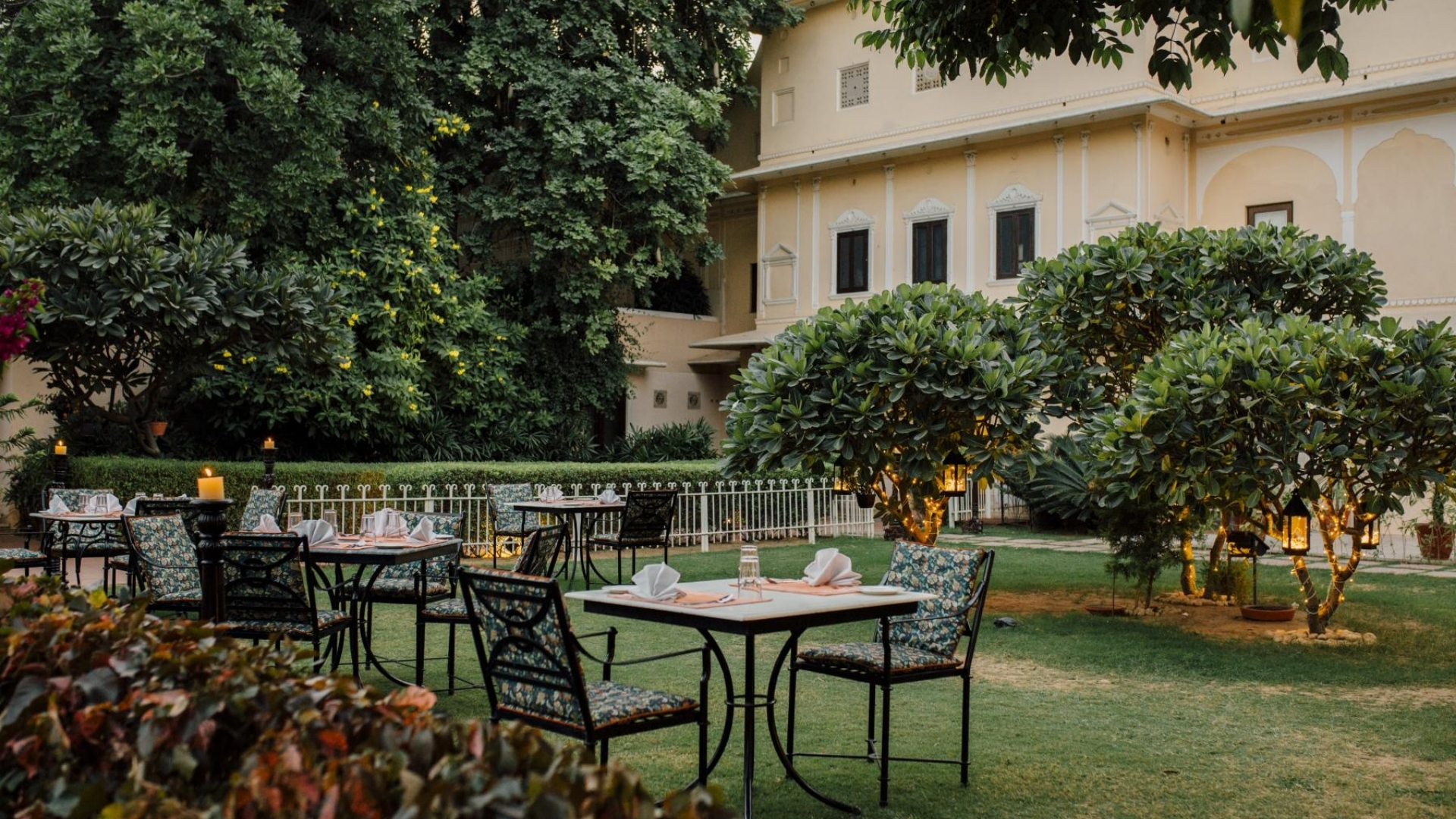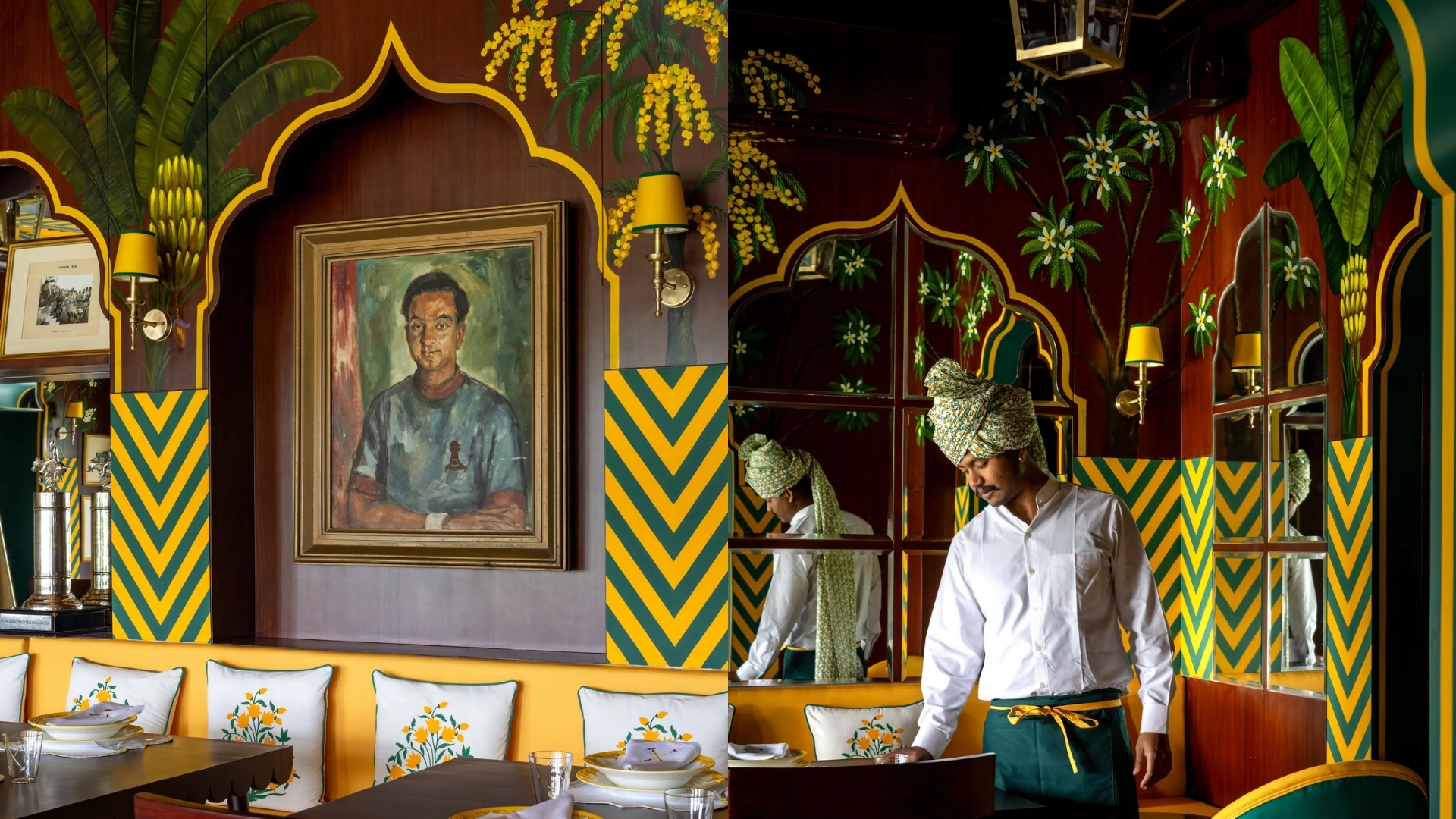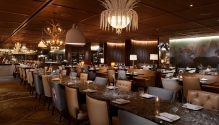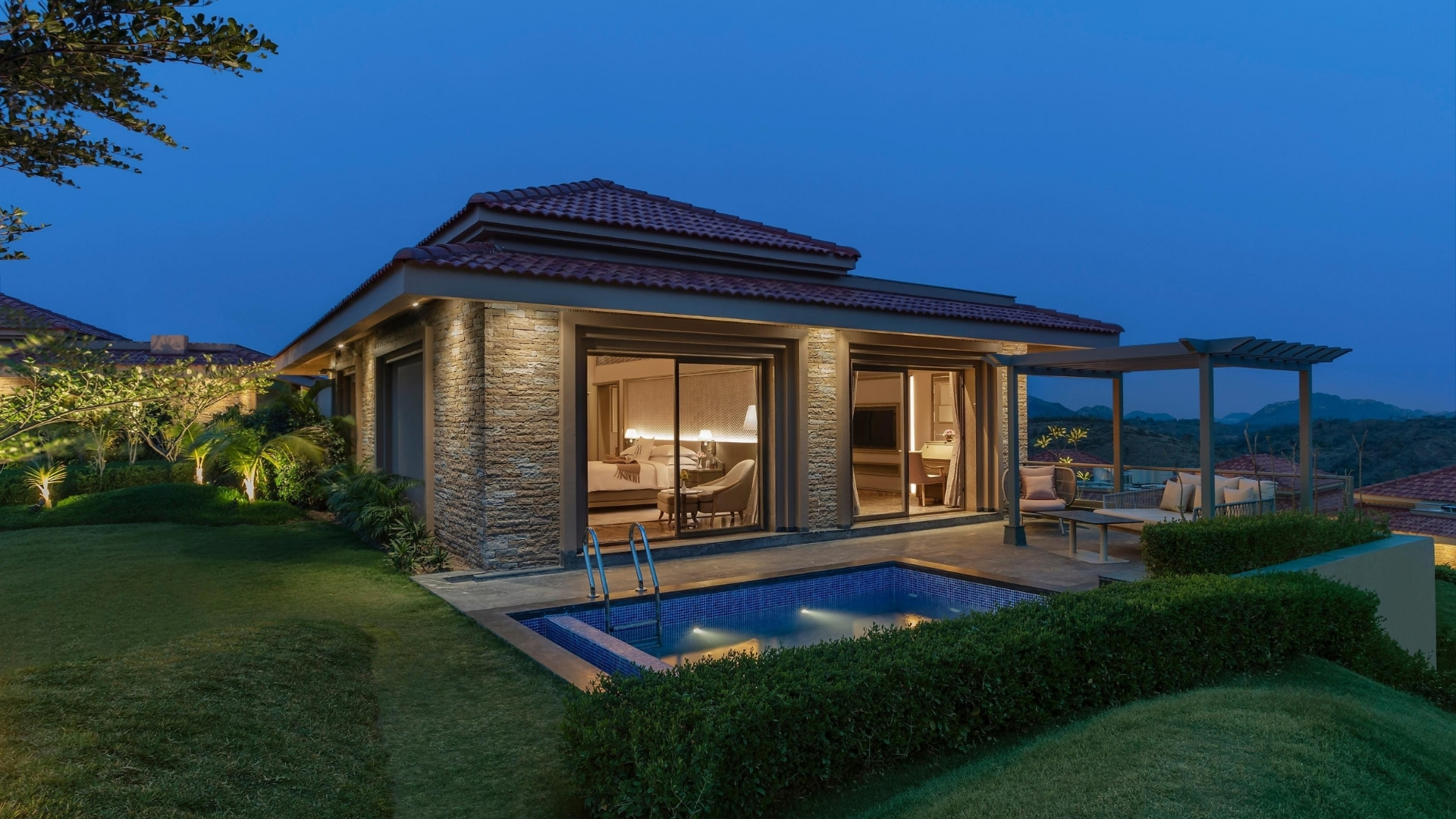Jaipur Taking Centrestage
With a remarkable range of new attractions, each with its own allure, Jaipur, the ‘Pink City’ is emerging as a must-visit destination. It is also carving a place among the world’s great cultural cities, alongside Edinburgh and Avignon.
By Suman Tarafdar
Jaipur, the ‘third corner’ of the lucrative Golden Triangle, is now making a play for equality. And how!
Jaipur is a key destination for both domestic and international tourists. In 2023, the state welcomed nearly 180 million domestic tourists and approximately 1.7 million foreign visitors as per numbers given by Rajasthan Tourism. Jaipur, known for its historical landmarks, plays a central role in these statistics, drawing significant interest due to its rich cultural and architectural heritage, as well as its new-found buzz. With a dizzying array of new museums, hotels, restaurants, cafés and designer boutiques, accompanied by new trends in fashion and design, Jaipur seems confident about its premier place in an emerging India’s socio-cultural fabric.
Of course, Jaipur, since its founding about three centuries ago (see box) has been a destination—initially, as the only ‘planned’ city in the subcontinent, and gradually, as a centre for traditions spanning art, craft, textiles, food, jewellery and more. The recent efflorescence, however, deserves a head turn. Just look at the new reasons to visit the city.
For example, take the new Jaipur Centre for Art nestled amidst The City Palace. A 2,600sq.ft. public exhibition space, it opened late in November. “JCA is a testament to our unwavering commitment to the city's artistic heritage and creative potential. I hope to contribute to bridging the history of my lineage and the evolving contemporary world and be remembered as a responsible custodian of the heritage of Jaipur,” says Sawai Padmanabh Singh, scion of the erstwhile royal family of Jaipur, who has been leading a number of efforts to highlight the heritage of the city. This includes his association with The Leela Group as part of their ‘Icon of India’ programme.

The sculpture park at Fort Nahargarh was an early initiative to put Jaipur on the cultural map.

Sawai Padmanabh Singh and Noelle Kadar are the force behind the new Jaipur Centre for Art nestled amidst the City Palace.
JCA is a testament to our unwavering commitment to the city's artistic heritage and creative potential.
Sawai Padmanabh Singh
Jaipur Centre for Art

He has partnered with Noelle Kadar, a strategic consultant on art and design, who says, “Our mission is to open the doors of Jaipur to the world, inviting galleries, artists, and art enthusiasts from across the globe to immerse themselves in modern Jaipur and experience contemporary art practices through the unique perspective of this vibrant city. Through curated exhibitions featuring works from Indian and international artists alike, we hope to showcase the dynamic interplay between tradition and innovation, heritage and modernity.” Kadar played a major role in putting the city on the global art map when she led the establishment of the Sculpture Park at the Nahargarh Fort.
The inaugural exhibition, titled A New Way of Seeing, curated by Peter Nagy, brings together a diverse group of established artists including Tanya Goel, Manjunath Kamath, Anish Kapoor, Alicja Kwade, Sean Scully, Dayanita Singh, Hiroshi Sugimoto, and LN Tallur.

Albert Museum
When books showed the way
In a city known for its arts and crafts, the biggest event to put Jaipur on the map about a decade-and-a-half-ago was books. Or literature. The Jaipur Literature Festival (JLF), founded in 2006, not only brought an unprecedented number of international literary stars—the likes of which had not been seen in India before—it also brought a huge domestic audience to glimpse these humans who had demi-god like status.
Ian McEwan, Pico Iyer, Michael Ondaatje, Alexander McCall Smith, Hanif Kureshi, V. S. Naipaul, J. M. Coetzee, Orhan Pamuk—the sheer parade of Nobel, Booker, Pulitzer and other top global prize winners in those heady early years dazzled audiences and caught national and international attention, putting Jaipur firmly on the map—for contemporary events.

Jaipur Literature Festival is the biggest literary event.
Daily attendee numbers for the festival topped well over 100,000 at the festival till 2019, with some festival attendees sleeping at the city’s main railway station as the hotels were all sold out. “The perception was that Jaipur was always a great centre for the arts, primarily supported by the maharajas of yore. Ever since the Jaipur Virasat Festival started, and then the JLF, what’s happened in the city is a huge revival because people conceive the value of the arts, and what it’s done to the city just in terms of economic growth,” points out Sanjoy Roy, Managing Director, Teamwork Arts, which organises JLF.
“That resurgence led to the government (then headed by Vasundhara Raje) looking at the arts quite differently and realising that it had a great play in the historic Pink City, which many travel to. This has been the cause of the resurgence in the opening up of the museums, forts, strengthening the old architectural heritage…”
Roy points out that Jaipur is taking its place among the great festival cities such as Edinburgh or Avignon. “It is the nature of the beast, festival cities have to be accessible, have a large hinterland, have access to international airports besides needing a rationale to want to go there, which in Jaipur’s case are the forts and palaces and the retail possibilities that it offers up.”

Dubbed 'the greatest literary show on earth', Jaipur Literature Festival has been instrumental for putting the city on the global literary map.

Noelle Kadar & HH Maharaja Sawai Padmanabh Singh of Jaipur
Our mission is to open the doors of Jaipur to the world, inviting galleries, artists, and art enthusiasts from across the globe to immerse themselves in contemporary Jaipur.
Noelle Kadar
Jaipur Centre for Art

Source of inspiration
Jaipur’s artistic reputation came early. In the early 18th century, the city was called the House of the Chattis Karkhanas for being a historical trade centre largely supported by crafts including painting, carving and jewellery.
Jaipur has always inspired and ignited artistic imagination and has been a haven for an aesthete, agrees Jaipur-based Mita Kapoor, CEO, Siyahi, one of India’s leading literary agencies. “You discover something beautiful as you turn a corner in this city. It is only natural that Jaipur is the cultural capital now. It seems as if the world has its eyes on Jaipur—practitioners prefer the quasi-metro lifestyle the city offers, which has led to artistic explorations hitherto unseen. Traditional crafts are seeing an intriguing twist and being revived—be it with textiles, painting, jewellery, metal work, pottery, woodwork, etc.”
Entrepreneur Gaurav Mehta, Founder, Jaipur Watch Company, points to Jaipur as a hub for design. “Jaipur is at the forefront of design sensibilities. The city has its own advantages—it’s very close to NCR Delhi, has very good flight connectivity, and you can stay at one-fourth of the price compared to Delhi, even though it's just three hours by road from Gurgaon. There is excellent manpower availability here, and at half the cost, so Jaipur is getting important as a business hub, not just for creative sectors but even BPOs, KPOs, etc.” He notes that the city has produced a lot of entrepreneurs who are giving back to the city. “A number of new museums and galleries are helping showcase the city and its fine craftsmanship in the same place.”

The City Palace is a venerable landmark of the city.
Jewellery designer Sunita Shekhawat’s museum on Meenakari is the newest opening in the buzzing world of Jaipur culture and arts. The Museum of Meenakari, within her flagship jewellery store, is dedicated to showcasing the intricate age-old enamelling technique that decorates metal surfaces with vibrant colours and patterns. Designed by Delhi-based Studio Lotus, the building incorporates various architectural influences, mirroring the fusion of traditional and modern elements in Shekhawat's jewellery.
Of earlier antecedents were two other private museums, which speak about how entrepreneurs in Jaipur give back to the city, as much as they take. Gyan Museum is an ode by two sons—Suresh and Arun Dhaddha—to Gyan Chand Dhaddha, their jeweller father’s collection of over 2,500 objets d’art, jewels, antiquities and textiles, dating back almost 3,000 years. Then, the 6,000sq.ft. Amrapali Museum, a Rajasthani haveli-sque structure, houses rare and stunning pieces of jewellery from India’s varied jewellery traditions—from tribal to royal, assiduously collected for over 50 years by Rajiv Arora and Rajesh Ajmera, founders of Amrapali Jewels.

Sanjoy Roy, Managing Director, Teamwork Arts
Jaipur is taking its place among the great festival cities such as Edinburgh or Avignon.
Sanjoy Roy
Managing Director, Teamwork Arts

The city of great restaurants, bars and hotels
A great city destination is not just defined by its culture, but by what it offers travellers in terms of leisure. Jaipur is bursting at the seams with hotels, restaurants, bars and much more.
In a fairly socially traditional city, the mushrooming of bakeries and confectionaries is just one of the many juxtapositions that make the city unique. As pastry chef Tejasvi Chandela, Founder, Dzurt Pâtisserie & Cafe, Jaipur’s first standalone French patisserie, says, there is a great demand for egg-free options in Jaipur. Even for a frequent visitor to Jaipur, there is a plethora of choices in eating out, shopping and entertainment.
The boom in tourism has meant the need for new hotels, the premium end seems to be catching attention. Padmanabh Singh has just re-opened the 22-year-old The Jaipur House, perched on a high rocky plateau in the Aravalli Range and overlooking the placid Nakki Lake, Mount Abu, as a boutique luxury hotel. Built in the late 19th century by HH Maharaja Sawai Ram Singh II of Jaipur as a holiday home, it has been restored and redesigned by designer Marie-Anne Oudejans.

A contemporary culinary creation by Dzurt Pâtisserie & Cafe.

The elegant Leela Palace Jaipur exudes timeless luxury thanks to its architecture.
You discover something beautiful as you turn a corner in this city. It is only natural that Jaipur is the cultural capital now.
Mita Kapoor
CEO, Siyahi

Mita Kapoor, CEO, Siyahi
The heady mix of revival and the energy to innovate is evident everywhere. One of the recently renovated hotels, The Royal Heritage Haveli, is an erstwhile 18th-century Rajasthani hunting lodge of the former royal family. The restoration process, carried out painstakingly over the years, has seen it emerge as one of the secret getaways for the well-heeled, with each of its rooms offering unique interiors.
“We want our guests to experience Jaipur as if they were staying at home and not a hotel,” says Shambhavi Singh, Director of The Royal Heritage Haveli, who is not only inspired by the recipes of her grandmother but also a trained pastry chef delivering some of the city’s exclusive confections. Singh says the new generation of ‘royals’ is playing a significant role in the revival as “there is a lot more emotional attachment, as it is home, eventually. It’s not working for a big company.”
The Johri, nestled amid the city’s famed Johri Bazaar, is a former haveli that has been renovated and is being acknowledged as a boutique ‘gem’, especially for its spectacular interiors. Raffles Jaipur brings the brand’s signatures to a new outpost, making Jaipur just one of the 25 or so places in the world to have a hotel flying the brand’s flag. Surprisingly small in inventory at a time when ever-larger hotels are being built, it reflects the rich built heritage of the region. Hospitality entrepreneur Barbara Miolini, the woman behind Bar Palladio Jaipur, has a new boutique hotel. Villa Palladio Jaipur is a chic and colourful private hotel that celebrates Indian traditional style with pizzazz. A vision in scarlet, with every surface vibrant and embellished, the villa is a hallucinogenic riposte to minimalism.

The Johri, a former haveli and Maharaja Sawai Ram Singh II's holiday home The Jaipur House have been transformed into boutique hotels.

The 800sq.ft. Heritage Signature Suite at The Royal Heritage Haveli features beautiful hand-painted frescoes.
ITC’s Mementos, a palace-style hotel, is about to open its second hotel for the brand, with a nod to multiple local architectural features such as sandstone, jaalis, chattris combined with a soft pastel mood board for a contemporary hotel. Laalee, a nine-room boutique hotel, has interiors inspired by the Hindu god Krishna. For those familiar with the Rajasthan Polo Club, the renovated Polo Palladio will be a breath of fresh air, with lots of nods to its heritage even as the interiors have become contemporary.
The choice for dining out in the city is exploding as well, each trying to raise the bar for both food and ambience. Kigelia Court, at The Royal Heritage Haveli, offers 20-seater al fresco dining under a sprawling Kigelia tree, while the adjacent 50-seater indoor dining room is covered with floor-to-ceiling hand-painted frescos. Baradari, located within the City Palace, is a 200-seater adaptive reuse space—a Studio Lotus design, again—where all of the original structures have been conserved and restored, including the black and white flooring inspired by the region’s leheriya textiles and the traditional Thikri work.
The 180-seater café 1135 AD at Amer Fort meanwhile reimagines the regal splendour of a past era. Silver plays a crucial role as both a dining table, a massive hookah and tableware are all made of this gleaming metal. Opera, with a red and pink colour palette combined with graphic designs, is a chic restaurant in an old haveli in the middle of the city. Arth Spaces is a conscious café that is inspired by the ingenious variety of millets, vegetables and produce of India.

Amer Fort's 1135 AD café exudes regal splendour owing to details like silver dinnerware.

Kigelia Court, at The Royal Heritage Haveli.
A widely admired new opening is Swinton House, which reflects the city’s colonial past. Named after Samuel Swinton Jacob, a Jaipur-based British army officer and architect, the bar and kitchen, located in the heart of Jaipur, is split into two. The Yard, with its long bar and al fresco area, offers modern cuisine and drinks, while The Albion, on the upper level, offers Pan-Asian cuisine and has a bar. Creating a lot of buzz is also Bar Palladio, a restaurant and lounge inside Narain Niwas Hotel. Self-described as ‘a candle-lit wonderland, a floating world’ it is especially noteworthy for its striking interiors in bold colours as well as its Italian cuisine menu.
The popularity of cocktails is on the rise in the city. Amongst the current favourites is Speakeasy In The Desert: Native Cocktail Room, which positions itself as the pink city's first cocktail room offering a signature experience that is in sync with its music, food, ambience and cocktails. Pink Bar at Hyatt Regency Jaipur plays homage to the terraces of the city's palaces, which were in the past the only outlet for women. The ubiquitous chhatris of these terraces form the backdrop to the bar, where pink and gold combine beautifully.
Retail, the peg which merited Jaipur the third leg of the Golden Triangle, is also seeing a resurgence. Even as Bapu Bazaar continues to have its adherents, there is a clear premiumisation. A marked move is to make the typical Sanganeri patterns more contemporary. Where Anokhi once showed the way, followed by Soma, Cottons, Kilol and Ratan Jaipur, today there is a range of local designer labels, almost all new, that are catering to a new range of customers.

Polo Palladio Jaipur is a private club open to the Rajasthan Polo Club's existing members.

Amer Fort's 1135 AD café
The PDKF Store, part of the Princess Diya Kumari Foundation, features designs by Princess Gauravi Kumari and Claire Deroo, with a contemporary, light-hearted, almost fun approach to fashion. Jaipur-based designer Surily Goel, is known for her lively and experimental collections. Studio Kassa, a multidisciplinary art and design studio in Jaipur, offers a range of products, from apparel to accessories to furniture. Gulaal, often spotted on ‘Bollywood’ celebs, has a range of comfortable, high-quality clothing and is inspired by local crafts.
Nila Jaipur, part-gallery, part-research centre and part-passion, promotes sustainable and ancient textile practices. Yes, it too encompasses a range of products. Suvasa is perhaps the closest to traditional aesthetics, especially for women’s wear, though its home furnishings have found their audience too. Idli offers bright colours and eye-catching baroque illustrations—take your choice of backdrop from apparel, bags and cushion covers. Karo specialises in summer wear, often with minimalistic pret already popular for its contemporary fits. Picchika’s saris have found a following for their hand-painted botanicals. Ecru is often acknowledged as one of the city’s prettiest and most distinctive stores, its interiors combining local and Arabian sensibilities.
Of course, there is retail even in unexpected quarters. Pottery lovers could spend a fortune at Khanoom, whose designs are inspired by the past—curios from the Silk Route, illustrations inspired by Materia Medica, Kufic calligraphy, Indian miniature painting, etc. If it's curios you desire, explore Makaan, a novelty/concept store whose offerings go from Naga stools to fashion towels and tribal masks! Araish Jaipur takes inspiration from the local finish technique for a stunning homeware line. Lovers of subdued pastel tones should budget extra time—and budget.

The PDKF Store

Khanoom's designs take inspiration from the Silk Route, Kufic calligraphy, Indian miniatures, etc.







































